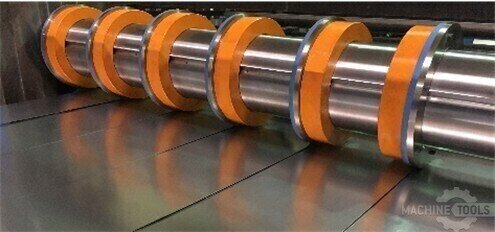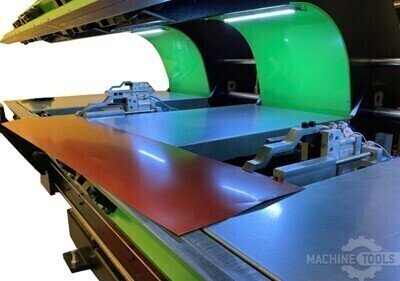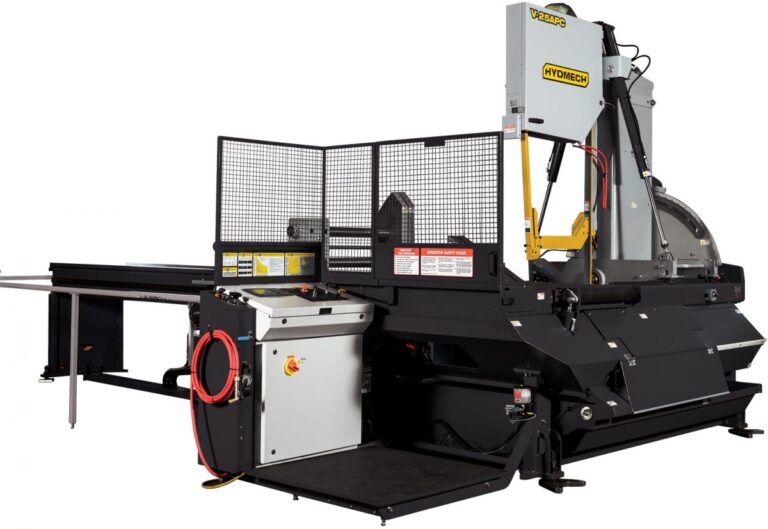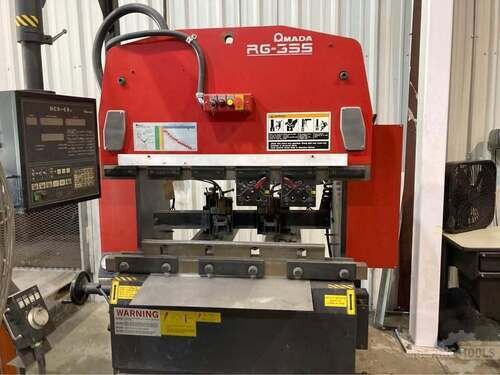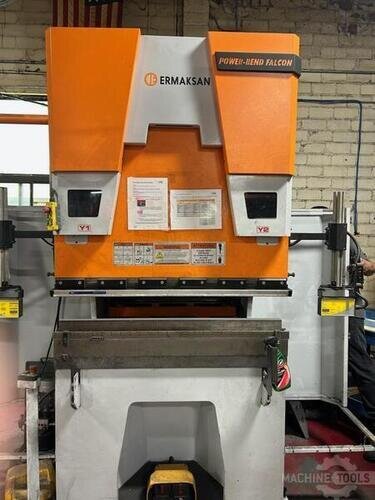I’m Nicole Salato, Service and Parts Lead at Mac-Tech. Every day I help shops keep their CNC folding machines and press brakes running with reliable service, accurate diagnostics, and the right parts the first time. My goal is simple: protect your precision and uptime with smart maintenance plans and properly sourced components.
What Your Shop Risks and Gains with OEM vs Aftermarket on CNC Folding Machines: Precision, Warranty, Uptime
Choosing between OEM and aftermarket parts directly affects bend accuracy, machine health, and delivery commitments.
- Precision and fit: Folding machines rely on tight tolerances across the folding beam, clamping beam, backgauge, and safety circuitry. OEM parts are built to the machine’s original specifications, including critical fits, sensor ranges, and firmware compatibility. Aftermarket can work for noncritical items, but mismatched tolerances or signal ranges in encoders, proportional valves, or I/O modules can introduce angle drift, poor hems, or repeatability issues.
- Control and firmware: CNC controls, drives, and feedback devices require exact signal and firmware matching. OEM components or approved equivalents maintain communication stability and machine safety logic. Unapproved substitutions can trigger intermittent faults that are hard to trace.
- Hydraulics and pneumatics: OEM valve cartridges, seal kits, and filter elements protect pump life, maintain pressure control, and reduce heat. Improper seals or media can cause leakage, cavitation, and premature wear.
- Warranty and liability: During warranty or after safety-related service, OEM parts protect coverage and compliance. Using nonapproved parts on safety circuits, folding beam bearings, or control hardware can void support or create risk.
- Uptime and install time: OEM kits often include shims, gaskets, and updated installation notes that speed replacement and calibration. Aftermarket parts may require adaptation, extra wiring, or additional PLC parameter work, which extends downtime.
Lessons from press brake maintenance reinforce these points. In both machine types, alignment, feedback integrity, oil cleanliness, and thermal stability are nonnegotiable for consistent results and reduced rework.
When to Choose OEM and When Quality Aftermarket Delivers Real Value
In practice, the best choice depends on the component’s role, safety impact, and availability.
Choose OEM or OEM-approved:
- CNC control hardware, PLC I/O cards, HMI screens, servo drives, encoders, linear scales
- Safety circuits, light curtains, e-stops, interlocks, and guarding switches
- Proportional valves, pump assemblies, regulator manifolds, beam bearings, precision gearboxes
- Backgauge ball screws, linear guides, and motor-gear units
- Any part tied to warranty, firmware, or machine safety
Quality aftermarket is often acceptable if specs match:
- Hydraulic filter elements with the correct beta ratio and collapse rating
- Hoses and fittings built to the machine’s pressure and temperature spec
- General-purpose sensors, proximity switches, relays, contactors, fuses
- Batteries for CNC backups, cabinet cooling fans, cable carriers
- Lubricants, wipers, wear pads, rollers, and fasteners meeting OEM material specs
When OEM is obsolete:
- Approved retrofit kits or proven aftermarket replacements can be a smart path. Plan for parameter backups, re-commissioning, and test bends. I can guide you through compatibility checks and validation steps that prevent repeat service calls.
Preventative Maintenance and On-Shelf Spares to Extend Machine Life and Avoid Downtime
A disciplined PM plan and a small strategic inventory of spares will prevent most surprises.
Core PM for CNC folding machines and press brakes:
- Daily to weekly
- Clean beam surfaces, gauge fingers, and sensor faces
- Check air supply dryness and FRL condition
- Inspect for hydraulic or pneumatic leaks and unusual noises
- Monthly to quarterly
- Verify backgauge repeatability and square to the clamping beam
- Inspect linear guides and ball screws; clean and lubricate to spec
- Check hydraulic oil level and temperature; review filter differential pressure
- Back up CNC parameters, tool tables, and programs; replace CNC batteries annually
- Inspect electrical cabinets for dust, fan operation, and tight terminals
- Semiannual to annual
- Oil analysis to confirm cleanliness targets and additive health
- Replace hydraulic filters, cabinet filters, and breather elements
- Confirm folding beam parallelism, clamping force calibration, and bend angle accuracy
- Inspect encoders, cables, and connectors for wear and strain relief
- Validate safety functions and document test results
Recommended on-shelf spares:
- Hydraulic filter elements, breather, and a gallon of the correct hydraulic oil
- Proximity sensors, limit switches, light curtain reflectors or lenses
- Fuses, relays, contactors, cabinet fans, and CNC backup batteries
- One encoder or feedback device for a critical axis if usage is high
- Seal kits for common cylinders or valve cartridges, plus key fasteners
- Lubricants approved for slides, ball screws, and ways
- Clearly labeled firmware versions and parameter backups stored off-machine
Inventory tips:
- Set min-max levels based on your production criticality and supplier lead times
- Tag parts by machine model and serial number to prevent mix-ups
- Review usage quarterly to adjust stocking and reduce capital tied up in slow movers
STEFA LCS3
Get Support Now: Fast parts sourcing and service coordination with Nicole Salato, Service & Parts Lead, Mac-Tech | nicole@mac-tech.com
Send me your machine model, serial number, error messages, photos of the failed part, and the needed-in-hands date. I will:
- Identify approved parts and compatible alternatives
- Quote in-stock items same day whenever possible
- Coordinate rush shipping, field service, or remote support
- Arrange board repair or exchange programs when available
- Provide install notes and calibration steps to minimize downtime
Typical timelines:
- In-stock OEM and common consumables: ship same day or next business day
- Factory-ordered components: 3 to 10 business days depending on manufacturer and logistics
- Obsolete or specialty items: I will propose retrofit or repair options with clear lead times
FAQ
- Parts sourcing timelines
- How fast can you source critical OEM parts?
- Most common items ship same day or next business day. For factory orders, I will give you an ETA within 24 hours and offer expedite options when available.
- How to identify when a machine needs service
- What are early signs my folding machine needs attention?
- Angle drift, inconsistent hems, slower cycles, unusual hydraulic noise, rising oil temperature, frequent sensor faults, or backgauge repeatability slipping are all prompts to schedule service.
- Preventative maintenance strategies
- What PM steps protect accuracy the most?
- Keep oil clean, verify beam parallelism, maintain backgauge alignment, back up CNC parameters, and replace filters and batteries on schedule. Small actions prevent big breakdowns.
- Mac-Tech response time or ordering process
- How do I place an order and what response time should I expect?
- Email me the model, serial, part description, and photos. I usually confirm part numbers and pricing the same business day, then coordinate shipment and service if needed.
- OEM vs aftermarket decisions
- When is aftermarket acceptable without risking accuracy?
- Use aftermarket for correctly spec’d filters, hoses, fans, and general sensors. Stay with OEM or approved equivalents for controls, drives, encoders, safety devices, precision mechanics, and hydraulic controls.
I am here to keep your machines accurate, safe, and earning. Whether you need a rush part, a smart PM plan, or help deciding between OEM and aftermarket, I will give you a clear path and a fast turnaround. Reach out and let’s protect your schedule and your margins.
Get Weekly Mac-Tech News & Updates

